The Benefits of Regular Vehicle Maintenance and Inspections: A Guide for Australian Drivers
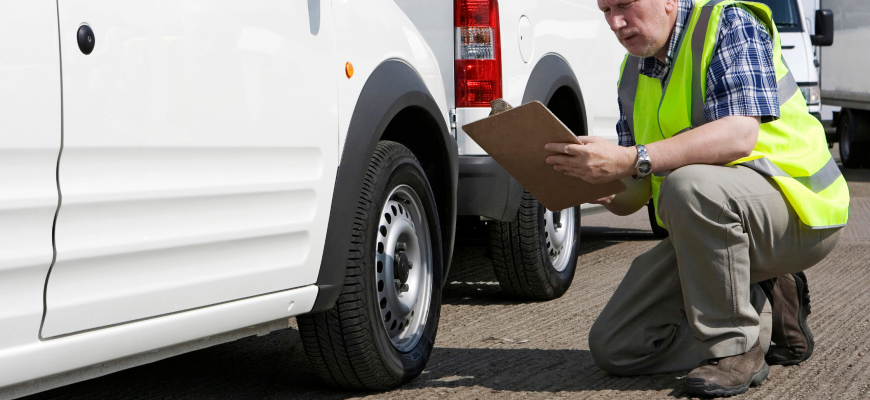
In the diverse landscape of Australia, from bustling urban streets to remote outback roads, the reliability of your vehicle is not just a matter of convenience—it’s a crucial aspect of safety and efficiency. Regular vehicle maintenance and inspections stand as the cornerstone of ensuring your car remains in optimal condition, ready to face the unique challenges of Australian driving conditions. This comprehensive guide delves into the myriad benefits of keeping up with your vehicle’s maintenance schedule, offering insights that promise to enhance performance, safety, and ultimately save you money.
The Importance of Regular Vehicle Maintenance
Safety: At the heart of regular vehicle maintenance is the assurance of safety. Essential components such as brakes, tyres, and lights play pivotal roles in preventing accidents. For instance, replacing worn-out brake pads can mean the difference between a safe stop and a potentially hazardous situation on the road.
Performance: Routine checks ensure your vehicle operates at its best. Regular servicing can improve fuel efficiency—a key consideration given the vast distances often travelled in Australia. Moreover, it enhances the vehicle’s reliability, ensuring it performs well in various climates, from the humid tropics to arid deserts.
Cost Savings: Preventative maintenance is financially savvy. Identifying and rectifying issues early can prevent costly repairs down the line. For example, changing the oil and filters at recommended intervals protects the engine, avoiding expensive overhauls.
Resale Value: A well-maintained vehicle commands a higher resale value. Regular servicing records act as a testament to the care you’ve invested in your vehicle, making it more attractive to prospective buyers.
Key Vehicle Maintenance Checks
Engine Oil and Filters: Regular oil changes are the lifeblood of your vehicle’s engine, ensuring it runs smoothly and efficiently. Similarly, clean filters support optimal performance of the engine and cabin air quality.
Tyres: Tyre maintenance is critical for safety and efficiency. Proper inflation maximises fuel economy and handling, while regular checks of tread depth ensure your vehicle remains safe in varied driving conditions.
Brakes: The braking system requires regular inspection to safeguard against failure. Worn pads or discs can significantly impact stopping distances, particularly in emergency situations.
Fluid Levels: Adequate fluid levels are vital for the vehicle’s operation. Coolant levels, for example, are crucial to prevent overheating, while brake and transmission fluids ensure smooth operation of their respective systems.
Battery: A healthy battery is essential, especially considering the technological demands of modern vehicles. Regular checks help avoid unexpected failures, ensuring reliability.
The Role of Professional Inspections
While DIY checks cover the basics, professional inspections offer a deeper dive into your vehicle’s health. Mechanics possess the expertise to spot potential issues that might be overlooked by the untrained eye. These thorough assessments can preempt failures in systems like the suspension, exhaust, and electrical, offering peace of mind that your vehicle is in top condition.
How Often Should You Service Your Vehicle?
Service frequency can vary based on the make, model, age, and how you use your vehicle. However, adhering to the manufacturer’s recommended service intervals is a good rule of thumb. For vehicles frequently exposed to harsh conditions—such as driving on unsealed roads or in extreme climates—more frequent checks may be necessary.
Maintaining and inspecting your vehicle regularly is an indispensable practice for any Australian driver. It enhances safety, ensures optimal performance, and saves money in the long run. By adopting a proactive approach to vehicle care, you can enjoy the confidence that comes with a reliable and efficient vehicle.
Seasonal Car Care: Preparing Your Vehicle for Adelaide’s Weather Conditions
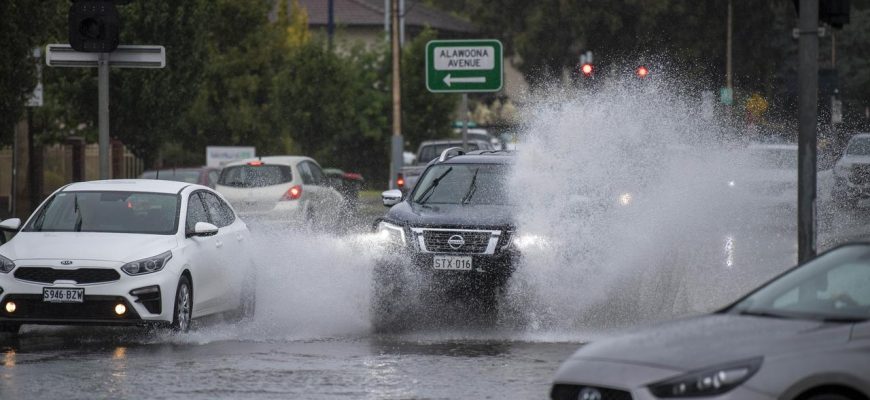
In Adelaide, where the sun blazes in the summer and winter brings its mild, wet embrace, the need for seasonal car care becomes paramount. The fluctuating weather conditions demand a proactive approach to vehicle maintenance, ensuring safety, longevity, and optimal performance. This guide offers a comprehensive look into preparing your vehicle for Adelaide’s unique climate, ensuring you navigate the seasons smoothly.
Understanding Adelaide’s Weather Patterns
Adelaide experiences a Mediterranean climate, characterized by hot, dry summers and cool, wet winters. Such conditions pose specific challenges for vehicles, from the stress of intense heat to the corrosion potential of increased moisture. Recognizing these seasonal impacts is the first step in tailoring your car care routine to suit Adelaide’s weather.
Preparing Your Vehicle for Summer
Cooling System Maintenance
The scorching Adelaide summer puts significant stress on your vehicle’s cooling system. A malfunctioning system can lead to overheating and severe engine damage. Start the season by checking the coolant level and ensuring it’s replaced as per the manufacturer’s recommendations. Inspecting the radiator for leaks and ensuring the cooling fan operates correctly can prevent overheating during those peak summer days.
Tyre Care and Air Conditioning Maintenance
Tyres react to temperature changes; hot roads can increase tyre pressure, leading to uneven wear or even blowouts. Check your tyre pressure regularly, adjusting according to the manufacturer’s guidelines. Additionally, a functioning air conditioning system is your best ally against the Adelaide heat. Servicing your A/C system, including a check for refrigerant leaks and ensuring the compressor is in good working condition, can make your summer drives more bearable.
Preparing Your Vehicle for Winter
Battery Care
Winter’s mild chill in Adelaide can still affect your car’s battery. Cold conditions slow down the chemical reactions within, reducing power output. A battery load test can ascertain its health, ensuring you’re not left stranded on a cold morning. Keep the battery terminals clean and check for signs of wear or damage.
Wiper Blades and Lights
Visibility is crucial in winter, with its longer nights and potential for rainy weather. Ensure your lights are all functioning correctly, clean, and bright enough to illuminate your path. Wiper blades should be in top condition to deal with the increased rain; if they’re leaving streaks, it’s time for them to be replaced.
Year-Round Maintenance Tips
Routine checks and maintenance are the backbone of vehicle care, irrespective of the season. Regular oil and filter changes, brake inspections, and ensuring your emergency kit is stocked and in the car, can avert many potential problems. Familiarity with your vehicle’s maintenance schedule, as outlined in the owner’s manual, is invaluable for keeping your car in peak condition through Adelaide’s seasons.
Conclusion
The changing weather conditions in Adelaide do not merely signify a shift in wardrobe but also in how we care for our vehicles. By understanding the specific challenges posed by the climate and undertaking targeted maintenance, you can ensure your car remains a reliable companion, ready to face the heat of summer or the cool damp of winter. The road ahead is as smooth as your commitment to your vehicle’s care.
List of Citations
- For up-to-date climate and weather patterns, always refer to the Bureau of Meteorology (Australia).
- The Royal Automobile Association of South Australia (RAA) offers invaluable advice on car care specific to Adelaide’s climate.
- For model-specific advice, your vehicle’s manufacturer maintenance guidelines are the go-to resource.
By keeping informed and proactive, your vehicle can weather Adelaide’s seasons, ensuring every journey is safe and enjoyable.
Navigating Car Insurance: Comprehensive vs. Third Party in Collision Repair
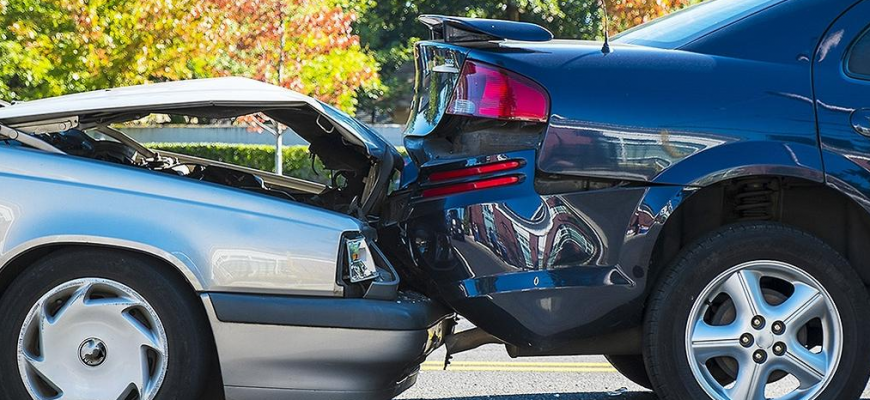
Understanding the nuances of car insurance can be a daunting task, especially when faced with the aftermath of a collision. In Australia, drivers have several insurance options, but the choice between comprehensive and third-party insurance becomes particularly significant when it comes to collision repairs. This article aims to demystify these options, providing you with the knowledge to make an informed decision.
Understanding Car Insurance in Australia
Car insurance is an essential consideration for every Australian driver. It not only offers financial protection against unexpected incidents but also is a legal requirement in some forms. The Australian car insurance market offers a range of products, including comprehensive insurance, third-party property damage, third-party fire and theft, and compulsory third party (CTP) insurance. Each type serves different needs, but when it comes to collision repairs, the choice often boils down to comprehensive vs. third-party insurance.
Comprehensive Car Insurance
Comprehensive car insurance offers the most extensive coverage, including damage to your vehicle and others’ property, theft, fire, and natural disasters. Its coverage of collision repairs is particularly noteworthy. If you’re involved in an accident, comprehensive insurance will cover the cost of repairing or replacing your vehicle, regardless of who is at fault.
Benefits
Peace of Mind: Knowing that your car is covered against a wide range of incidents can provide significant peace of mind.
Financial Protection: In the event of a collision, you won’t be out of pocket for the repairs or replacement of your vehicle.
Additional Features: Many comprehensive policies offer extra benefits, such as a courtesy car while yours is being repaired.
Drawbacks
Higher Premiums: This extensive coverage comes at a cost, with higher premiums than third-party insurance.
Excess Payments: You may need to pay an excess when making a claim, which can vary based on the policy and the nature of the claim.
Example Scenario
Imagine you accidentally reverse into a pole, causing significant damage to your car. With comprehensive insurance, you can claim the cost of the repairs, minus any excess. Without it, you’d be facing a hefty repair bill on your own.
Third-Party Car Insurance
Third-party car insurance covers damage to other people’s property and legal costs associated with such damage, but it does not cover repairs to your own vehicle in the event of a collision. It’s divided into two main types: third-party property damage and third-party fire and theft.
Benefits
Lower Premiums: Third-party insurance is more affordable than comprehensive insurance, making it a good option for drivers on a budget.
Legal Coverage: It provides coverage for legal costs if you’re at fault in an accident that causes damage to someone else’s property.
Limitations
No Coverage for Your Vehicle: If you’re at fault in a collision, you’ll have to pay for your own car’s repairs.
Limited Protection: Third-party fire and theft offer some protection for your vehicle but only in specific circumstances.
Example Scenario
If you collide with another car and are found to be at fault, third-party insurance will cover the repairs to the other driver’s car, but you will need to cover the cost of repairing your own vehicle.
Comparing Comprehensive and Third-Party Insurance in Collision Repair
When deciding between comprehensive and third-party insurance for collision repairs, consider the following:
Value of Your Vehicle: Comprehensive insurance is generally recommended for newer or higher-value cars.
Financial Situation: If you would struggle to pay for repairs out of pocket, comprehensive insurance offers greater protection.
Driving Habits: Frequent drivers or those who commute in heavy traffic may benefit more from comprehensive coverage.
Making an Informed Decision
Choosing the right car insurance requires a balance between coverage and cost. Consider your vehicle’s value, your financial ability to pay for unexpected repairs, and your risk tolerance when making this decision.
Conclusion
Navigating car insurance options in Australia, especially when it comes to collision repairs, doesn’t have to be complicated. By understanding the differences between comprehensive and third-party insurance, you can choose the policy that best suits your needs, ensuring you’re well-protected on the road.
The Role of Paintless Dent Removal in Modern Collision Repair
The Role of Paintless Dent Removal in Modern Collision Repair: A Guide for South Australians
In the ever-evolving world of automotive repairs, paintless dent removal (PDR) has emerged as a game-changer, particularly in the realm of collision repair. This innovative technique offers a swift, cost-effective, and environmentally friendly alternative to traditional dent repair methods, revolutionizing how Australians address vehicle damage.
Understanding Paintless Dent Removal (PDR)
Paintless Dent Removal is a cutting-edge repair process that meticulously removes minor dents and dings from a vehicle’s body without compromising its original paint job. Utilising specialised tools, technicians meticulously manipulate the metal back into its original form from behind the vehicle’s panel. This method stands in stark contrast to conventional techniques that often rely on filler and paint, making PDR a preferred choice for preserving a car’s value and integrity.
The Advantages of PDR in Modern Collision Repair
Cost-Effectiveness
One of the most compelling benefits of PDR is its cost efficiency. Traditional dent repair methods can be expensive due to the need for paint and body fillers. PDR, on the other hand, eliminates these materials from the equation, significantly reducing the overall cost of repairs.
Time Efficiency
Time is of the essence in our fast-paced world, and PDR offers a rapid solution to collision repair. While traditional methods may take days, PDR often requires just a few hours, minimizing vehicle downtime and getting drivers back on the road swiftly.
Environmental Impact
PDR is a green alternative in the automotive repair industry. By forgoing the use of paint and fillers, it reduces the emission of volatile organic compounds (VOCs), contributing to a healthier environment.
Vehicle Value Preservation
Maintaining the original paintwork is crucial for preserving a vehicle’s resale value. PDR excels in this aspect, as it keeps the factory paint intact, unlike traditional methods that can decrease a car’s market value.
PDR in the Australian Automotive Repair Industry
The adoption of PDR in Australia has seen significant growth, with many repair shops now offering it as a standard service. The Australian Automotive Aftermarket Association (AAAA) recognizes the importance of PDR, advocating for training and certification to ensure high-quality repairs. Australian car owners increasingly prefer PDR for its efficiency and cost-effectiveness, with numerous success stories highlighting its benefits.
Challenges and Limitations of PDR
Despite its advantages, PDR is not a one-size-fits-all solution. The technique has its limitations, particularly with the size and location of dents. Deep or sharp dents near the edge of panels may not be suitable for PDR. Additionally, the availability of skilled technicians can vary, making it essential for car owners to research and select reputable providers.
The Future of PDR in Australia
Innovation continues to drive the PDR industry forward, with new tools and techniques being developed to tackle a broader range of damages. As environmental awareness grows, the demand for sustainable repair options like PDR is expected to rise. The future of PDR in Australia looks promising, with potential expansions into more complex repairs as technology advances.
Choosing a PDR Provider in Australia
Selecting the right PDR technician is crucial. Look for providers with certifications and a solid track record of success. Reviews and testimonials can offer insights into a technician’s expertise, especially with specific vehicle makes and models. Warranties on repairs are also a good indicator of a provider’s confidence in their work.
Paintless Dent Removal stands as a cornerstone in modern collision repair, offering a myriad of benefits over traditional methods. Its cost-effectiveness, efficiency, and environmental friendliness make it an attractive option for Australian car owners. As the industry evolves, PDR is set to play an increasingly significant role in automotive repairs, maintaining vehicles’ aesthetics and value while minimising environmental impact.
By understanding the advantages and limitations of PDR, Australians can make informed decisions about their vehicle repairs, embracing this innovative technique as a preferred choice for addressing minor dents and dings. As the automotive industry continues to evolve, the role of PDR in modern collision repair is undoubtedly poised for growth, reflecting the changing needs and values of drivers nationwide.
Common Types of Collision Damage and How They’re Repaired
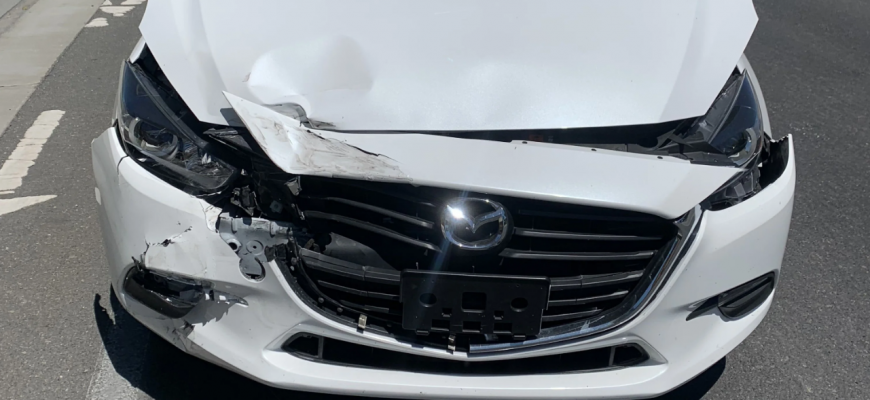
Common Types of Collision Damage and How They’re Repaired
Understanding the nuances of collision damage and the intricacies of its repair is crucial for any vehicle owner. In Australia, where road conditions and regulations may differ from other parts of the world, being informed about these aspects is even more vital. This article delves into the common types of collision damage encountered by Australian drivers and outlines the repair processes, aiming to equip you with knowledge that ensures your vehicle’s longevity and safety.
Types of Collision Damage
Front-End Collision Damage
Front-end collisions often result in visible damage to the bumper, bonnet, and lighting systems. Beyond aesthetics, such impacts can affect safety features, including airbag deployment sensors. Repairing front-end damage typically involves panel beating, replacement of damaged parts, and precise paintwork to match the vehicle’s original color.
Rear-End Collision Damage
Rear-end impacts can deform the bumper, trunk, and exhaust system. Hidden damage might also occur, affecting the alignment and structural integrity. Repairs may range from simple bumper replacements to more complex adjustments to the vehicle’s frame or undercarriage.
Side-Impact Collision Damage
Side collisions can crumple doors, shatter windows, and bend the vehicle’s frame. Repairing this type of damage often requires extensive work, including door panel replacement and, in severe cases, cutting out and replacing sections of the vehicle’s frame.
Roll-Over Damage
Roll-over accidents typically cause significant damage to the roof, potentially compromising the vehicle’s structural integrity. Repairing roll-over damage is complex, often involving the replacement of the entire roof, realignment of the frame, and sometimes, the painstaking task of ensuring the vehicle is structurally sound and safe to drive.
How Collision Damages Are Repaired
Assessment and Estimation
The repair process begins with a thorough assessment to determine the extent of the damage. In Australia, certified technicians use advanced diagnostic tools to evaluate both visible and underlying damage, ensuring an accurate repair estimate.
Body Repair or Replacement
Deciding whether to repair or replace a damaged part depends on the severity of the damage and the cost-effectiveness of each option. Technicians employ various techniques, from traditional panel beating to the use of modern materials and adhesives, to restore the vehicle’s appearance and integrity.
Painting and Finishing
Matching the paint colour and finish of a vehicle is an art. Modern paint shops use computerized systems to create a perfect match. The painting process involves several stages, including priming, colour application, and sealing, to ensure a durable and aesthetically pleasing finish.
Structural Repairs
Vehicles suffering from frame or structural damage require specialized equipment for alignment and straightening. This process is critical to restoring the vehicle’s safety and drivability, adhering to strict Australian standards.
Safety Inspections and Testing
After repairs, vehicles undergo rigorous safety inspections and testing to ensure they meet Australia’s stringent road safety standards. This includes everything from wheel alignment checks to airbag system diagnostics.
Considerations for Australian Vehicle Owners
Insurance Claims
Navigating insurance claims is a crucial step in the repair process. In Australia, it’s important to understand your policy’s coverage, including the choice of repairer and how claims affect future premiums.
Costs and Warranty
Understanding the costs involved and the warranty offered on repairs is essential. Reputable repairers will provide transparent quotes and warranties that cover both parts and labour.
Latest Trends in Collision Repair Technology
Advanced Materials and Techniques
The use of advanced materials like carbon fibre and aluminium requires specialized repair techniques. Australian repairers are adopting these new materials and methods, ensuring repairs meet the highest standards.
Digital and 3D Technologies
Digital scanning and 3D printing are revolutionizing the way custom parts are fabricated and fitted. These technologies allow for precise repairs and can significantly reduce the time your vehicle spends in the shop.
For South Australian drivers, understanding the types of collision damage and their repair processes is more than just about keeping your vehicle looking its best; it’s about ensuring its safety and reliability. By choosing reputable repair services and staying informed about the repair process, you can navigate the aftermath of a collision with confidence. Remember, the safety of your vehicle impacts not just you but everyone on the road.
Other Sources
To ensure the accuracy and reliability of the information provided, this article references data and guidelines from, the Australian Automotive Aftermarket Association (AAAA), National Collision Repairer magazine, the Insurance Council of Australia, and Choice Magazine. These sources are instrumental in providing up-to-date, Australia-specific information on vehicle repairs and safety standards.
Safety First: How Repairs Ensure Your Vehicle’s Safety on the Road

In the bustling streets of Adelaide, where diverse landscapes meet urban sprawls, the safety of your vehicle isn’t just a priority—it’s a necessity. The phrase “Safety First” is not just a mantra but a critical approach to ensuring that every journey, whether it’s a short commute within the city or a long drive across the outback, is undertaken with the utmost confidence in your vehicle’s reliability and safety. This article delves into the indispensable role that regular vehicle repairs and maintenance play in safeguarding your safety on the road.
The Link Between Vehicle Maintenance and Road Safety
Recent statistics from the Australian Bureau of Statistics (ABS) and the Australian Transport Safety Bureau (ATSB) highlight a concerning trend: a significant number of road accidents are attributable to vehicle defects. These aren’t just numbers; they represent real-life incidents where proper maintenance could have made a difference. Regular vehicle check-ups and repairs are not just about prolonging the life of your vehicle but are crucial in preventing accidents and ensuring the safety of all road users.
Essential Vehicle Maintenance for Safety
Tyres
Your vehicle’s tyres are the only point of contact with the road, making their maintenance paramount. Regular checks for wear and tear, ensuring correct tyre pressure, and replacing old tyres can drastically improve your vehicle’s handling and braking. Incorrect tyre pressure alone can lead to reduced grip on the road, increased stopping distances, and even tyre blowouts.
Brakes
The braking system is your vehicle’s most critical safety feature. Signs of wear, such as squealing noises, a spongy brake pedal, or a car that pulls to one side when braking, require immediate attention. Regular inspections by a professional can identify issues before they compromise your safety.
Lights
Fully functional lighting is essential for visibility at night and during poor weather conditions. This includes headlights, brake lights, turn signals, and hazard lights. Regular checks ensure you can see and be seen by other road users, reducing the risk of accidents.
Windscreen and Wipers
A clear windscreen is vital for good visibility. Windscreen cracks can impair your view and potentially lead to more significant issues if not addressed. Similarly, wiper blades should be replaced regularly to ensure they can effectively clear your windscreen in adverse weather conditions.
Steering and Suspension
These components are crucial for maintaining control of your vehicle. Issues with steering and suspension can lead to handling difficulties, increasing the risk of accidents. Regular checks ensure these systems are functioning correctly, keeping your vehicle stable and responsive on the road.
Recognizing When Your Vehicle Needs Repairs
Being attuned to your vehicle’s performance is key. Unusual noises, changes in handling, or warning lights on the dashboard are all indicators that your vehicle may need professional attention. Ignoring these signs can lead to more significant, costly repairs down the line and, more importantly, compromise your safety.
The Role of Professional Mechanics
Choosing a qualified and experienced mechanic is crucial. In Australia, look for certifications or accreditation by reputable organizations such as the Australian Automotive Aftermarket Association (AAAA). These professionals have the expertise to diagnose and repair issues accurately, ensuring your vehicle meets safety standards.
DIY Maintenance vs. Professional Repairs
While some maintenance tasks can be safely undertaken at home, such as oil changes and tyre pressure checks, others should always be left to professionals. Brake repairs, electrical issues, and anything involving the vehicle’s safety systems are complex and require specific tools and knowledge.
The Impact of Neglecting Vehicle Repairs
Neglecting vehicle maintenance can have dire consequences. Beyond the increased risk of accidents, driving a vehicle deemed unroadworthy can lead to legal implications in Australia. Case studies from the National Roads and Motorists’ Association (NRMA) and the Royal Automobile Club of Victoria (RACV) illustrate the real-life impacts of such negligence.
How Regular Repairs Enhance Long-Term Vehicle Safety and Value
Maintaining your vehicle isn’t just about safety; it’s also an investment in its longevity and resale value. A well-maintained vehicle logbook can significantly enhance your vehicle’s resale value, proving its history of care and maintenance.
The mantra “Safety First” encapsulates the essence of responsible vehicle ownership. Regular maintenance and timely repairs are not just measures to prolong your vehicle’s life but are fundamental practices to ensure your safety and that of others on the road. By adhering to the guidelines outlined in this article, you contribute to a safer driving environment for everyone.
Other Sources
– Royal Automobile Association (RAA)
– Australian Automobile Association (AAA)
– National Roads and Motorists’ Association (NRMA)
– Australian Automotive Aftermarket Association (AAAA)
The Environmental Impact of Collision Repairs
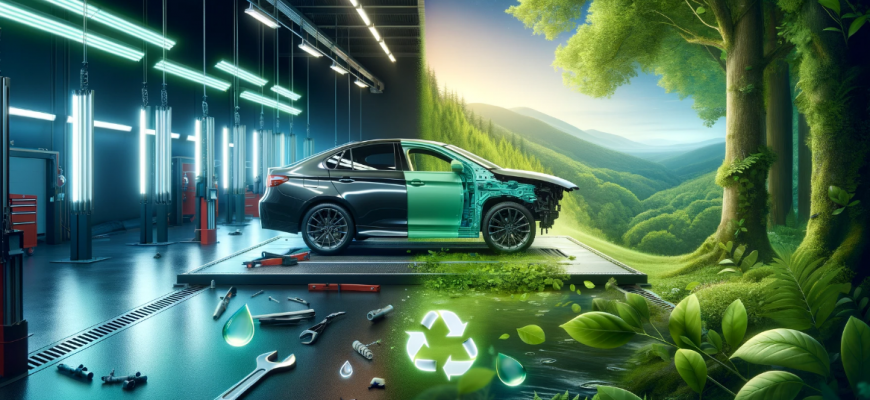
In the bustling streets of Australia, vehicles are an indispensable part of daily life, making collision repairs a frequent necessity. However, the environmental footprint of these repairs is often overlooked. This article delves into the significant impact collision repairs can have on the environment and showcases how Adelaide’s repair shops, particularly Dynamic Paint N Panel, are leading the charge in adopting more sustainable practices. Their efforts not only aim to protect our planet but also offer cost savings for customers, setting a commendable example for the industry.
The Environmental Challenge of Collision Repairs
Collision repair processes, from dent removal to full bodywork, traditionally involve activities that pose considerable environmental risks. The use of solvent-based paints releases volatile organic compounds (VOCs) into the atmosphere, contributing to air pollution and posing health risks to workers. Energy consumption is high, with extensive use of electricity for welding, painting, and drying. Moreover, the disposal of non-recyclable materials, such as certain plastics and composites, adds to the growing problem of landfill waste. In Australia, the automotive repair industry is grappling with these challenges, seeking ways to mitigate its environmental impact while maintaining high standards of service.
Adelaide’s Approach to Sustainable Collision Repairs
Adelaide has emerged as a frontrunner in addressing the environmental concerns associated with collision repairs. Shops across the city are adopting innovative practices to reduce their ecological footprint. Key among these practices is the shift towards water-based paints, which significantly lower VOC emissions compared to their solvent-based counterparts. Energy efficiency is another focus area, with many shops investing in LED lighting and energy-efficient equipment to cut down electricity use. Recycling has also taken center stage, with efforts to salvage and reuse metal parts and plastics wherever possible.
Dynamic Paint N Panel: A Case Study
Dynamic Paint N Panel stands out in Adelaide’s automotive repair landscape for its commitment to sustainability. This shop has embraced a holistic approach to eco-friendly practices, starting with the adoption of water-based paints that are less harmful to the environment and safer for employees. They have invested in state-of-the-art equipment that not only performs repairs more efficiently but also consumes less energy.
Dynamic Paint N Panel’s dedication to minimizing waste is evident in their rigorous recycling program, which ensures that all recyclable materials are properly processed, reducing landfill contribution. Their efforts have not gone unnoticed, earning them recognition within the industry for their environmental stewardship.
What sets Dynamic Paint N Panel apart is their ability to demonstrate that eco-friendly repairs can also be cost-effective for customers. By reducing waste and optimizing repair processes, they are able to offer competitive pricing without compromising on quality. This win-win scenario encourages more vehicle owners to choose sustainable repair options, contributing to a larger positive impact on the environment.
The Benefits of Eco-Friendly Collision Repairs
The shift towards sustainable collision repairs offers numerous benefits. Environmentally, it significantly reduces the industry’s carbon footprint, decreases air and water pollution, and minimizes waste. For customers, it often translates to lower repair costs and the peace of mind that comes from choosing an environmentally responsible service. Furthermore, repair shops that adopt green practices enhance their reputation, attracting customers who value sustainability.
The Australian government and various environmental organizations support these initiatives, offering incentives and recognition to businesses that lead the way in sustainability. This not only helps the environment but also sets a standard for the industry, encouraging more shops to adopt eco-friendly practices.
The environmental impact of collision repairs is a pressing issue that demands attention and action. Adelaide’s repair shops, led by pioneers like Dynamic Paint N Panel, are showing that it is possible to combine high-quality service with environmental responsibility. Their efforts are not only safeguarding the planet but also paving the way for a more sustainable automotive repair industry. As consumers, supporting businesses that prioritize eco-friendly practices is a powerful way to contribute to environmental conservation. Together, we can drive towards a greener, more sustainable future.
Other Sources
Dynamic Paint N Panel. “Our Commitment to the Environment.”
DIY Car Care Tips: Maintaining Your Vehicle Post-Repair
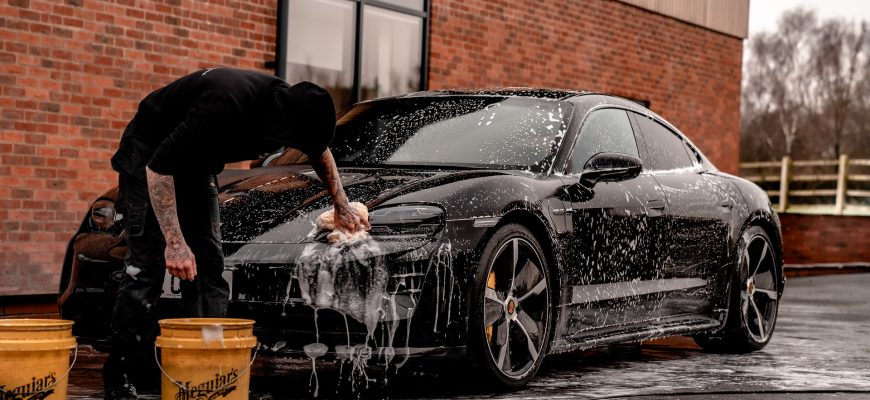
After your car has been repaired, whether it was a minor scratch or major bodywork, the journey to maintain its pristine condition is just beginning. For Australian car owners, the harsh sun, coastal salt air, and rugged roads can pose unique challenges to keeping your vehicle in top shape. This article delves into essential DIY car care tips that will help you preserve the finish of your repaired vehicle, ensuring it remains as good as new for years to come.
Understanding the Basics of Car Maintenance Post-Repair
Maintaining a vehicle post-repair is crucial not just for aesthetic reasons but also to safeguard your investment. Repairs, especially those related to the car’s body and paintwork, require special attention to prevent future damage and to maintain the vehicle’s value. Unlike regular maintenance, post-repair care focuses on protecting the repair work and ensuring the vehicle’s finish remains unaffected by environmental factors and daily use.
Essential DIY Car Care Tips
Regular Cleaning and Washing
The first step in maintaining your vehicle’s post-repair condition is regular cleaning. Dirt, dust, bird droppings, and tree sap can cause damage over time, eating away at the new paint if not removed promptly. For Australian car owners, it’s advisable to wash your car every two weeks using a pH-neutral car wash shampoo. Websites like CarsGuide recommend avoiding harsh chemicals and opting for microfiber cloths and mitts to prevent scratching the surface.
Waxing and Polishing
Applying a quality car wax or sealant every three to six months can provide a protective layer over the paint, shielding it from UV rays and pollutants. Polishing, on the other hand, should be done sparingly, ideally once a year, to maintain the shine without wearing down the paint. Choice.com.au lists several top-rated products that are suitable for the Australian climate, ensuring long-lasting protection and gloss.
Checking and Maintaining Fluid Levels
Fluids are the lifeblood of your vehicle. Ensuring engine oil, coolant, brake fluid, and transmission fluid are at optimal levels and in good condition is essential. Use the manufacturer’s recommended fluids and check them monthly. This not only keeps your car running smoothly but also prevents corrosion and wear that can compromise your vehicle’s post-repair state.
Tyre Maintenance
Tyres directly impact your vehicle’s performance and safety. Regular checks for pressure and tread wear are vital. Adhere to the recommended tyre pressure for your vehicle, as incorrect pressure can lead to uneven wear and reduce the lifespan of your tyres. The Australian Automobile Association (AAA) provides guidelines on tyre maintenance that are worth consulting.
Protecting Your Car from the Elements
Australia’s weather can be harsh on vehicles. Protect your car from the sun by parking in the shade or using a car cover, especially if the paint is newly applied. If you live near the coast, the salt in the air can accelerate corrosion; regular washing can help mitigate this risk. The RAA and NRMA offer tips on protecting your vehicle from environmental damage.
Advanced Maintenance Tips
Scratch and Dent Prevention
Even with careful driving, scratches and dents can occur. Using touch-up paint for small scratches and considering paint protection films can offer an additional layer of defense. For DIY solutions, Australian automotive experts recommend products that match your car’s exact paint code to ensure a seamless repair.
Interior Care and Preservation
The interior of your car deserves as much attention as the exterior. Use UV-protectant sprays for dashboards and panels, and condition leather seats regularly to prevent cracking. Fabric protectors can keep upholstery looking new. Australian brands offer a range of products designed for the local market, ensuring your car’s interior remains in excellent condition.
Regular Inspections and Professional Servicing
Despite the best DIY care, regular professional inspections are crucial. Mechanics can spot potential issues before they become major problems, saving you time and money in the long run.
Maintaining your vehicle post-repair requires dedication and the right approach, especially in Australia’s unique environment. By following these DIY car care tips, you can preserve the finish of your repaired car, ensuring it stays in excellent condition for years to come. Remember, the effort you put into maintaining your vehicle not only protects your investment but also ensures it remains a pleasure to drive.
Other Sources
– CarsGuide. [https://www.carsguide.com.au/]
– Drive. [https://www.drive.com.au/]
– Australian Automobile Association (AAA). [https://www.aaa.asn.au/]
– Royal Automobile Association (RAA). [https://www.raa.com.au/]
– National Roads and Motorists’ Association (NRMA). [https://www.mynrma.com.au/]
Why Genuine Parts Matter for Your Vehicle’s Repair
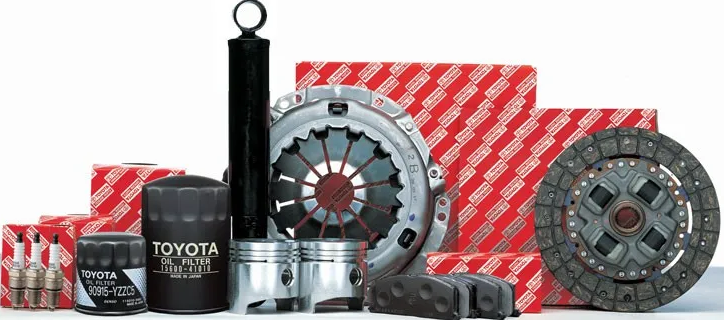
When it comes to maintaining and repairing your vehicle, the debate between using genuine versus aftermarket parts is a pivotal one. For many Australian vehicle owners, the choice might not seem significant at first glance. However, the type of parts used in your vehicle can have profound implications not only on its performance but also on your safety and the vehicle’s overall lifespan. This article delves into the essential reasons why opting for genuine parts is a wise decision for any vehicle repair.
Understanding Vehicle Parts: Genuine vs. Aftermarket
At the core of this discussion are two types of parts: genuine and aftermarket. Genuine parts, also known as Original Equipment Manufacturer (OEM) parts, are made directly by the vehicle’s manufacturer. They are the very same parts used in the production of new vehicles. On the other hand, aftermarket parts are produced by different manufacturers and not endorsed by the original vehicle manufacturer. While aftermarket parts are often touted for their affordability and variety, they may not always match the quality and compatibility of genuine parts.
The Importance of Genuine Parts for Your Vehicle
Safety: The paramount concern for any vehicle owner should be safety. Genuine parts are designed and tested specifically for your vehicle model, ensuring a perfect fit and optimal performance. This precise engineering guarantees that your vehicle operates as it was intended, maintaining the manufacturer’s safety standards. In contrast, aftermarket parts might not have undergone the same rigorous testing, potentially compromising vehicle safety.
Warranty Protection: Using genuine parts is also crucial in preserving your vehicle’s warranty. Many manufacturers stipulate that the warranty becomes void if aftermarket parts cause damage. Genuine parts come with their own warranty coverage, offering peace of mind and protection against defects.
Long-Term Value: While genuine parts might come with a higher price tag initially, their value becomes evident in the long run. Designed to meet the exact specifications of your vehicle, genuine parts usually last longer and perform better, reducing the need for frequent replacements. This can lead to significant savings over time, not to mention the avoidance of the hassle associated with less reliable aftermarket parts.
How to Ensure You’re Getting Genuine Parts
Ensuring you’re getting genuine parts for your vehicle repair or service might seem daunting, but it doesn’t have to be. The simplest way to guarantee authenticity is by purchasing parts from authorized dealers or service centers. When taking your vehicle in for service, explicitly request OEM parts and ask to see the parts’ packaging or documentation to verify their authenticity. Genuine parts often bear the manufacturer’s logo or come with certification marks that attest to their quality.
Another tip is to ask for parts by their specific part number. This can help avoid any confusion and ensures that the parts installed on your vehicle are the exact ones designed for its make and model. Being proactive in this way can make a significant difference in the quality of repair and maintenance your vehicle receives.
Choosing genuine parts for your vehicle’s repair isn’t just about maintaining its performance; it’s about prioritizing safety, preserving your warranty, and investing in your vehicle’s long-term value. While the allure of cheaper aftermarket parts can be tempting, the potential risks and costs they pose down the line are considerable. For Australian vehicle owners, the decision to opt for genuine parts is a testament to the care and investment in their vehicle’s longevity and reliability. Remember, when it comes to vehicle repair and maintenance, quality should never be compromised. Prioritize genuine parts, and give your vehicle the care it deserves.
Top 5 Questions to Ask Your Collision Repair Technician
Navigating the aftermath of a car accident in Australia involves not just dealing with insurance and potential injuries but also ensuring your vehicle is properly and safely repaired. Selecting a reputable collision repair technician is a pivotal step in this process. By asking the right questions, you can guarantee high-quality repairs, ensure your peace of mind, and uphold the safety and longevity of your vehicle.
Why Ask Questions?
Being informed and prepared when dealing with collision repair services helps you understand the repair process, avoid unnecessary expenses, and ensure your vehicle is restored to its pre-accident condition. Knowledge empowers you to make informed decisions, ensuring your car receives the best possible care.
Question 1: What Certifications Do You Hold?
Certifications are a testament to a technician’s expertise and adherence to industry standards. Ask about their certifications, such as industry standard qualifications or manufacturer-specific endorsements, which indicate their commitment to maintaining high standards of repair quality and safety.
Question 2: Can You Provide a Detailed Repair Estimate?
Understanding the scope of work and the costs involved is crucial. A detailed estimate should itemise the repairs needed, and parts required, and provide an estimation of time and cost. This transparency helps you grasp the extent of damage and the necessary steps to repair it.
Question 3: Will the Repairs Affect My Car’s Warranty?
It’s essential to understand how repairs might interact with your car’s manufacturer warranty. The technician should assure you that using OEM (Original Equipment Manufacturer) parts and following approved procedures will not void any existing warranties, safeguarding your vehicle’s value and compliance.
Question 4: How Long Will the Repairs Take?
A realistic timeline for repairs allows you to plan accordingly. The technician should provide a tentative completion date, taking into account the availability of parts and the extent of the damage, helping you manage expectations and alternative transportation needs.
Question 5: Do You Provide a Guarantee or Warranty on Repairs?
A guarantee on repair work offers future peace of mind. Inquire about the type of warranty the shop offers on their repairs, including what it covers and its duration, ensuring the longevity and reliability of the repair work.
Tips for Choosing a Collision Repair Technician
When selecting a collision repair technician, your diligence is your best ally. Here’s a checklist of attributes and red flags to guide your choice:
Checklist of Attributes:
– Up-to-date certifications and training.
– Clear and comprehensive communication.
– Warranty offerings on repair work.
– Positive customer reviews.
– A clean and professional workspace.
Red Flags to Watch Out For:
– Absence of industry certifications.
– Vague or incomplete repair estimates.
– Use of pressure tactics.
– Lack of warranty on repairs.
– Negative customer feedback.
This checklist can help you identify a skilled and trustworthy technician, ensuring your vehicle is in good hands.
Choosing the right collision repair technician is more than just asking questions; it’s about comparing options and making an informed decision. We encourage you to gather estimates and opinions from multiple technicians, focusing on quality and safety over cost. This proactive approach ensures your vehicle returns to the road in top condition, safeguarding both your investment and your safety.
Remember, the right questions lead to the right repairs. Take control of the repair process by being informed, vigilant, and selective, ensuring your vehicle receives the best possible care post-collision.

